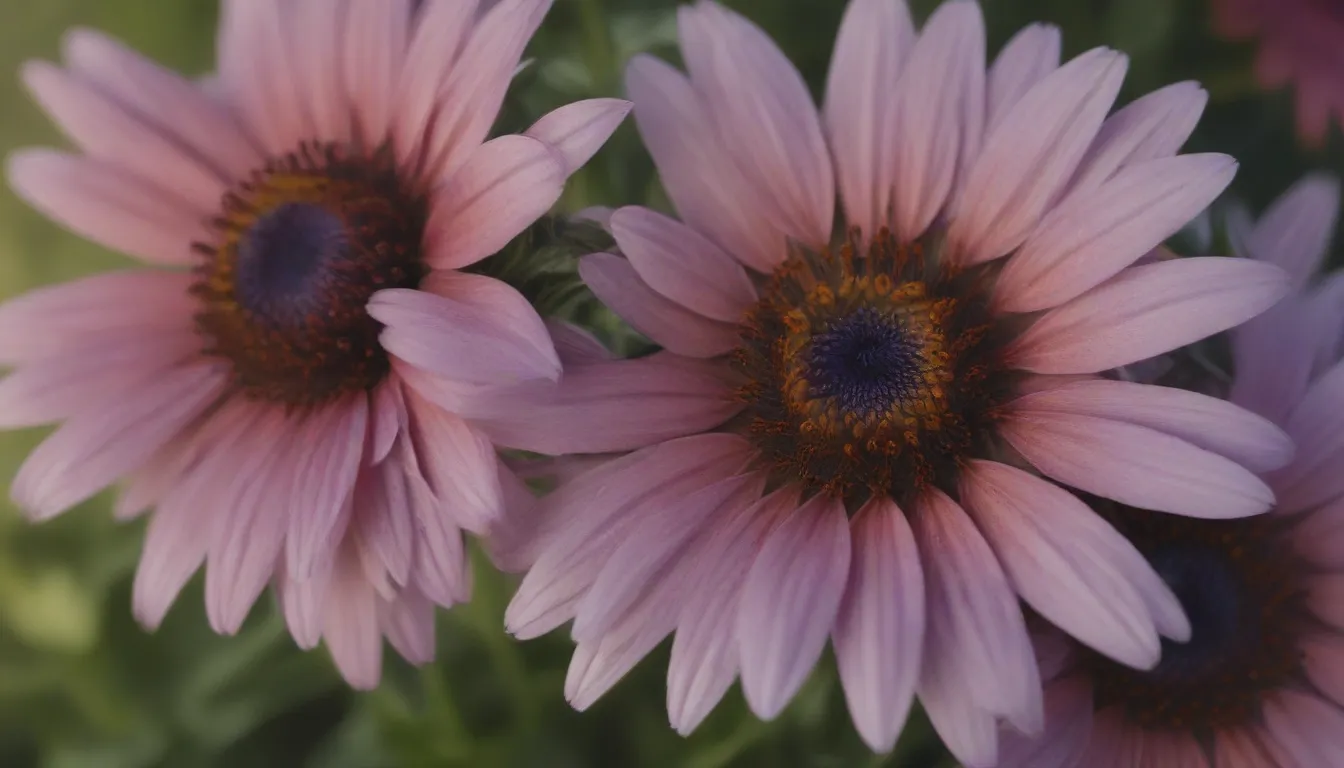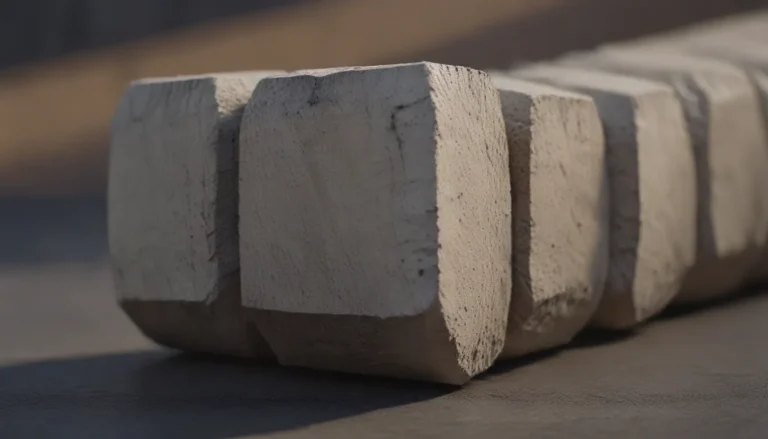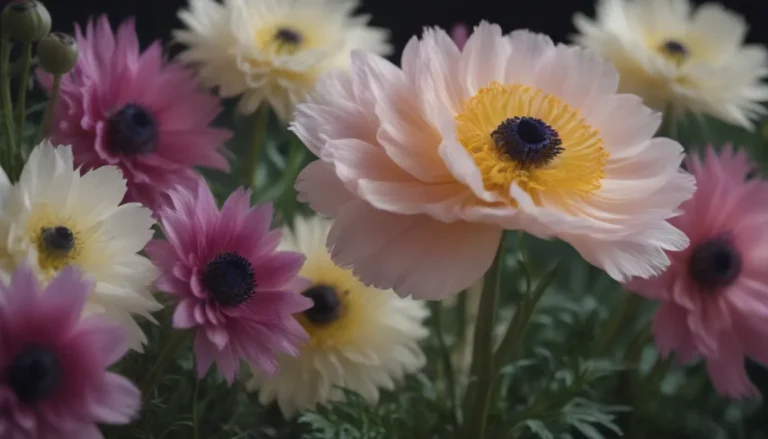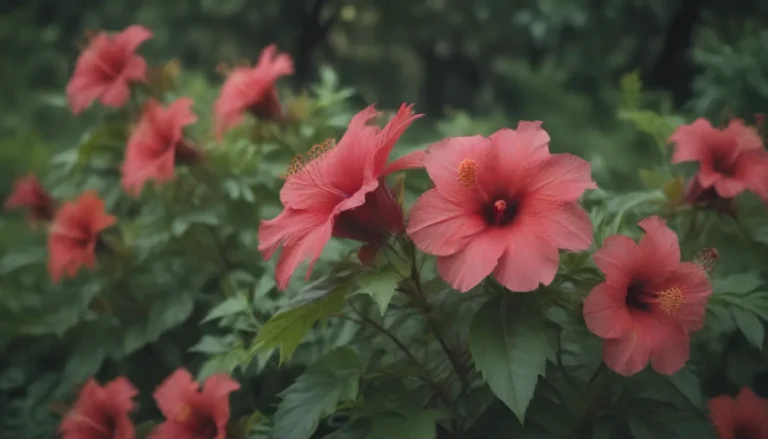The Complete Guide on Growing and Caring for African Daisies

If you are a fan of colorful, radiant flowers, then African daisies are the perfect addition to your garden. With their striking resemblance to common daisies but vibrant coloring, African daisies (Osteospermum spp.) are a delightful choice for any garden enthusiast. In this comprehensive guide, we will explore everything you need to know about growing and caring for African daisies to ensure they thrive in your garden.
Getting to Know African Daisies
African daisies belong to the Asteraceae family, just like Shasta daisies and zinnias. These tender perennials are best planted in the spring after the threat of frost has passed. They have a quick growth rate and typically bloom about two months after sprouting from seeds. African daisies are reliably hardy in zones 10 to 11 and are often planted as annuals in other climate zones.
African Daisy Care Tips
Whether you choose to plant African daisies in the ground or in containers, they are sure to bring beauty to your garden. Here are some essential care tips to help your African daisies thrive:
- African daisies peak in bloom twice a year, in late spring to early summer and late summer to early fall.
- Pair African daisies with other plants that provide visual interest during hot spells when they may stop blooming.
- Ensure your African daisies receive plenty of sunlight and are planted in well-draining soil.
- Water and fertilize regularly throughout the growing season (spring to fall) and deadhead the plants to encourage reblooming.
Light Requirements
African daisies bloom best in full sun, although they can tolerate partial shade. Some newer cultivars remain open at night, adding an extra touch of beauty to your garden.
Planting and Soil
Organically rich soil with good drainage and a slightly acidic pH is ideal for African daisies. Plant them at least 12 inches apart to allow for proper spreading.
Watering Tips
While somewhat drought-tolerant, African daisies still require at least 1 inch of water per week for optimal growth. Keep the soil evenly moist to prevent issues like root rot.
Temperature and Humidity
These flowers prefer mild weather and can handle nighttime temperatures down to about 40°F. Frost can damage or kill them, so be mindful in colder climates.
Fertilizing
African daisies enjoy plenty of nutrients to bloom at their best. Consider applying a balanced fertilizer monthly during the growing season for optimal results.
Types of African Daisies
There are numerous African daisy species and varieties to choose from, each offering its unique beauty to your garden. Some popular varieties include:
- Osteospermum ‘Passion Mix’
- Osteospermum ‘4D’
- Osteospermum ‘FlowerPower Spider White’
- Osteospermum ‘Lemon Symphony’
- Osteospermum ‘Pink Sugar’
- Osteospermum ‘Ravers Hearts and Tarts’
- Osteospermum ‘Sideshow Copper Apricot’
- Osteospermum ‘Soprano White’
Propagating African Daisies
While most African daisy varieties are hybrids and won’t grow true from seeds, you can propagate them easily through cuttings. This method is also useful for overwintering the plant in regions outside its hardiness zones.
How to Grow African Daisies From Seeds
Starting African daisies from seeds can be a rewarding experience. Here’s a step-by-step guide to help you successfully grow these beautiful flowers from seeds:
- Sow the seeds on the surface of a pot filled with potting mix about 8 to 10 weeks before the last winter/spring frost.
- Keep the seeds moist until they germinate and grow the seedlings in bright indirect light.
- Harden off indoor plants for two weeks before outdoor planting and pinch back seedlings after planting to encourage bushier growth.
Common Pests and Plant Diseases
African daisies are relatively pest and disease-resistant when grown in optimal conditions. However, be on the lookout for fungal issues in damp or humid conditions. Improving air circulation and using fungicides can help combat these problems. Additionally, common pests like whiteflies and aphids can be controlled with insecticidal soap or chemical sprays.
Getting African Daisies to Bloom
While African daisies don’t require much encouragement to bloom, regular deadheading can help promote additional blooming. Addressing issues like poor nutrition, extreme heat, and insufficient light can also impact blooming.
Common Problems With African Daisies
Although African daisies are generally low-maintenance plants, a few common problems may arise:
- Animal Damage: Groundhogs are known to feed on annuals, including African daisies. Sturdy fencing is the best defense against animal damage.
- Diminished Blooms in Midsummer: In hot, humid climates, African daisies may go semi-dormant during midsummer. Planting them in partial shade can help mitigate this issue.
African daisies make beautiful additions to borders, mixed beds, and containers. Pair them with plants featuring yellow or chartreuse foliage to enhance their vibrant colors. Remember, African daisies are unique in their characteristics and require specific care to thrive in various environments. So, whether you are a seasoned gardener or just starting, African daisies are a delightful choice for your garden.
Sources:
– Clemson Cooperative Extension. Growing Annuals.
– Missouri Botanical Garden. Osteospermum.
– UMass Extension Greenhouse Crops and Floriculture Program. Production Guidelines for Four Crops – Osteospermum, Angelonia, Calibrachoa & Ornamental Sweet Potato (Ipomoea batatas).
– Mississippi State University Extension. African Daisy.
– Cornell Cooperative Extension. Groundhog Resistant Plants.





